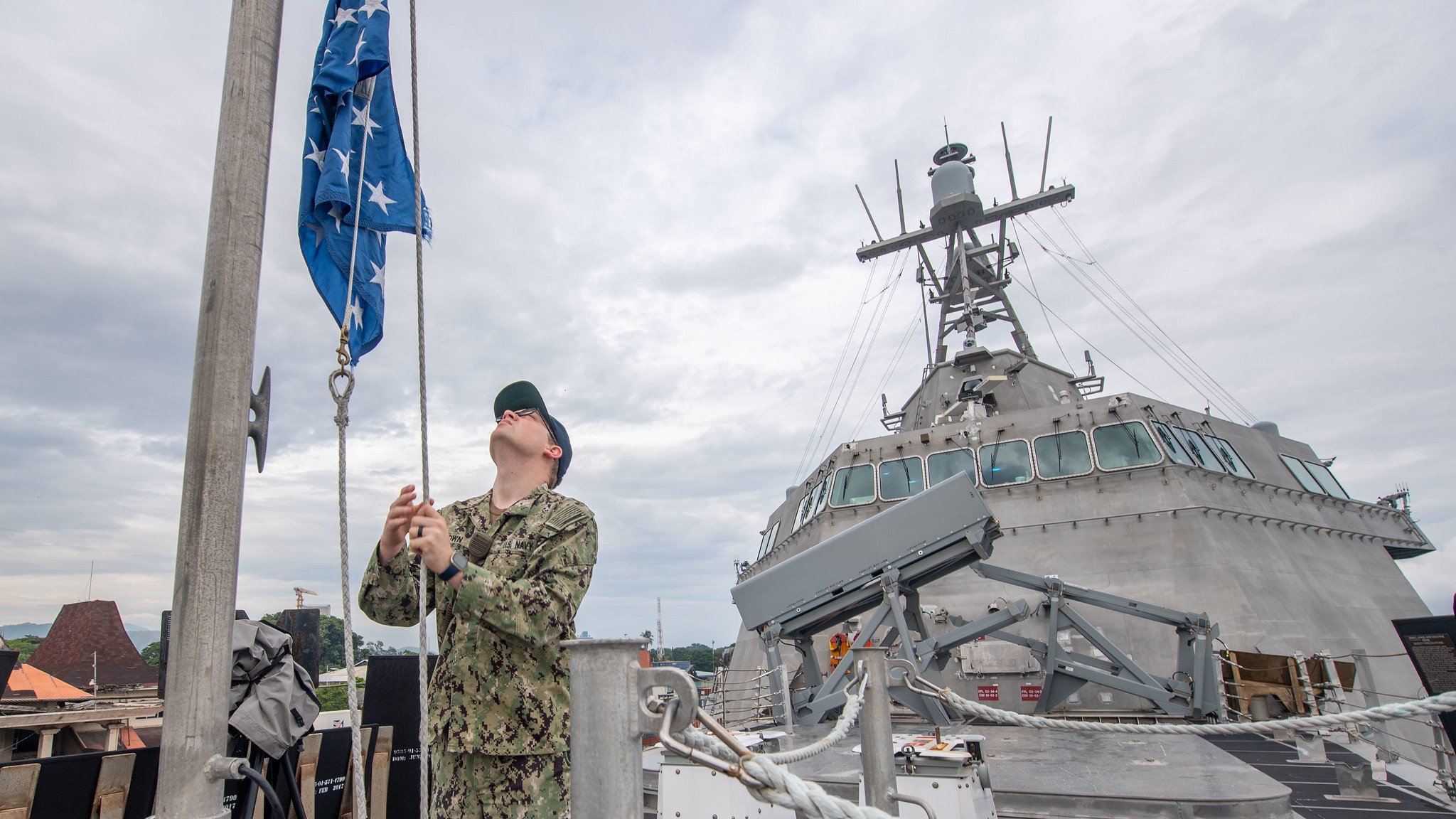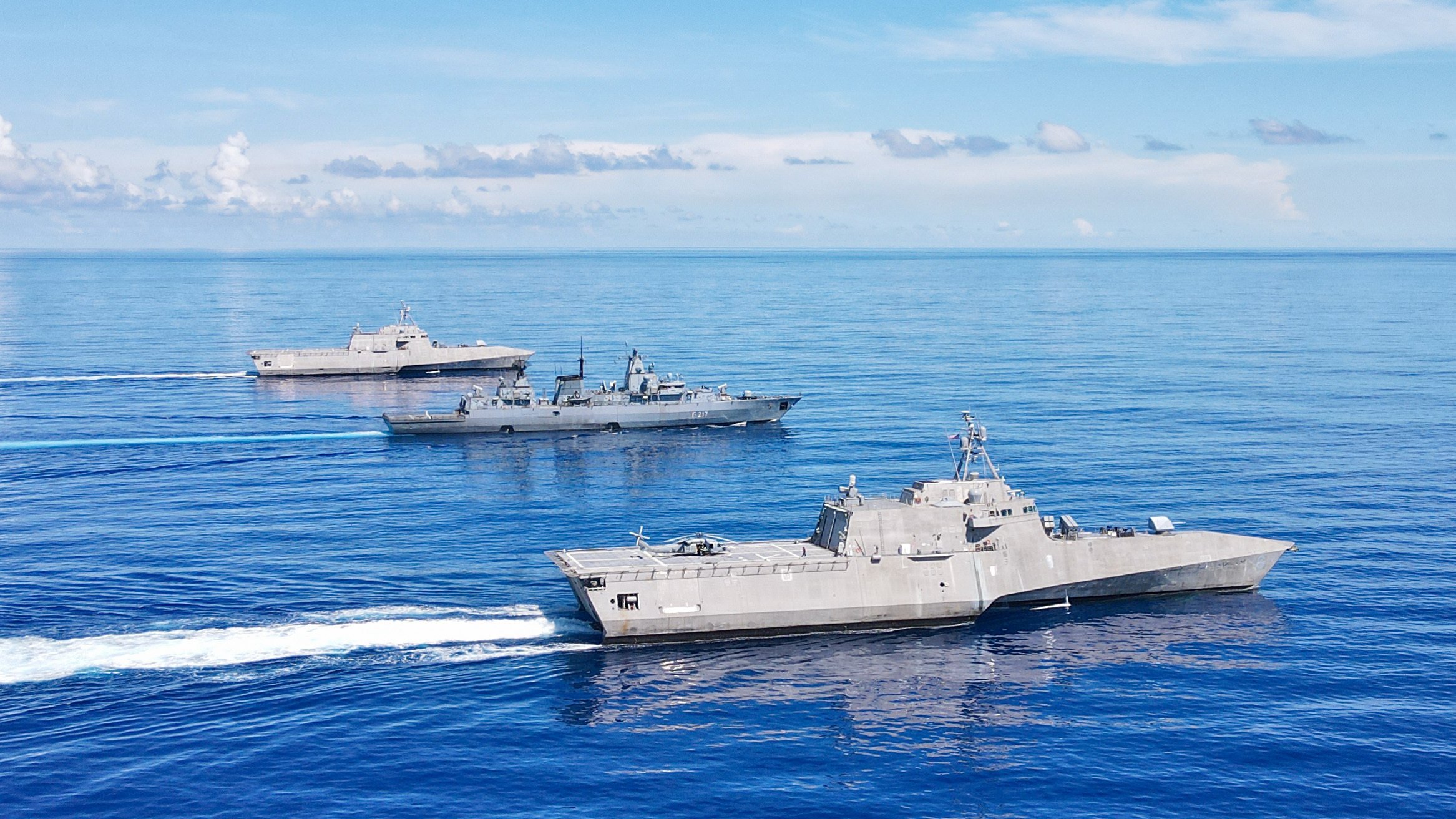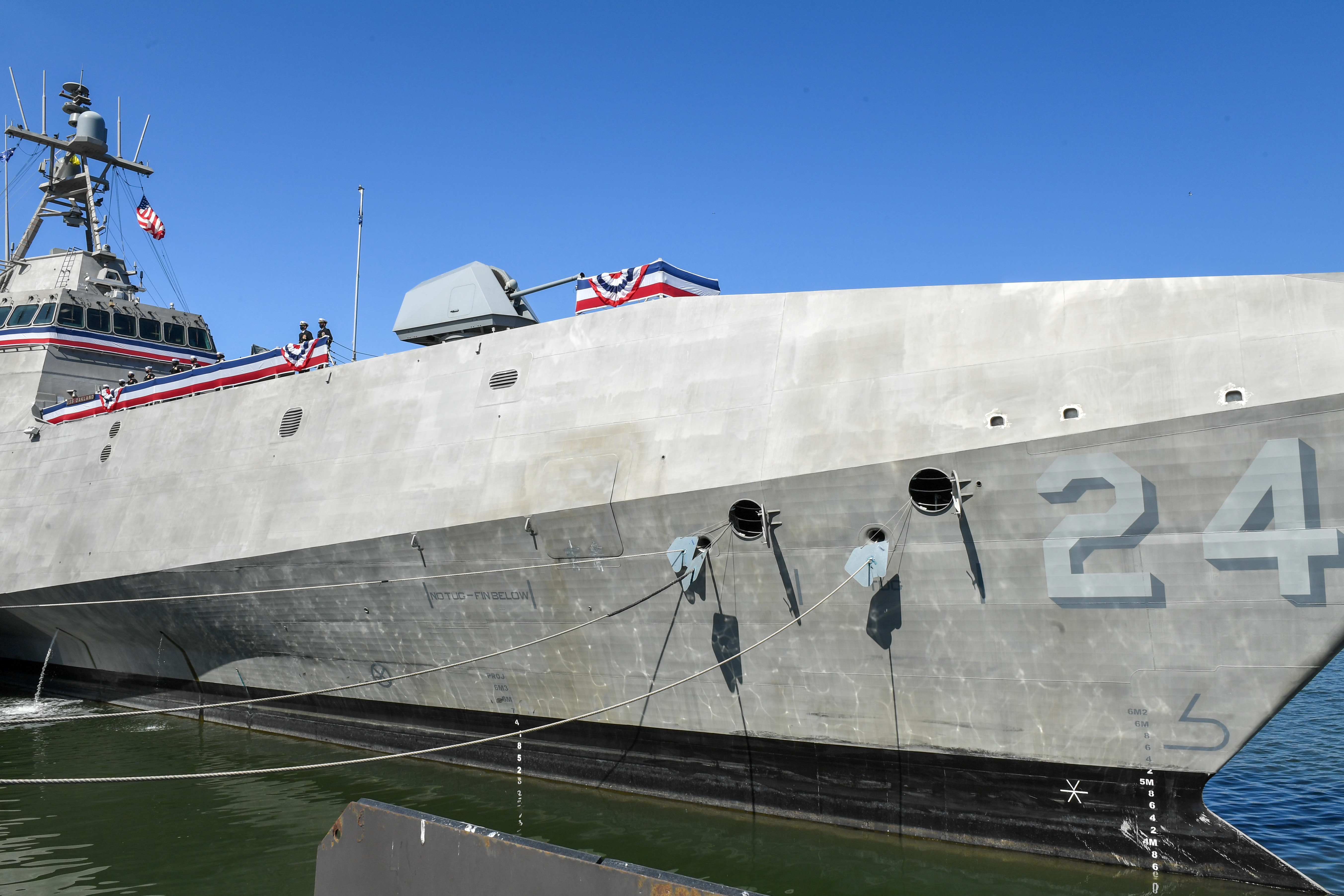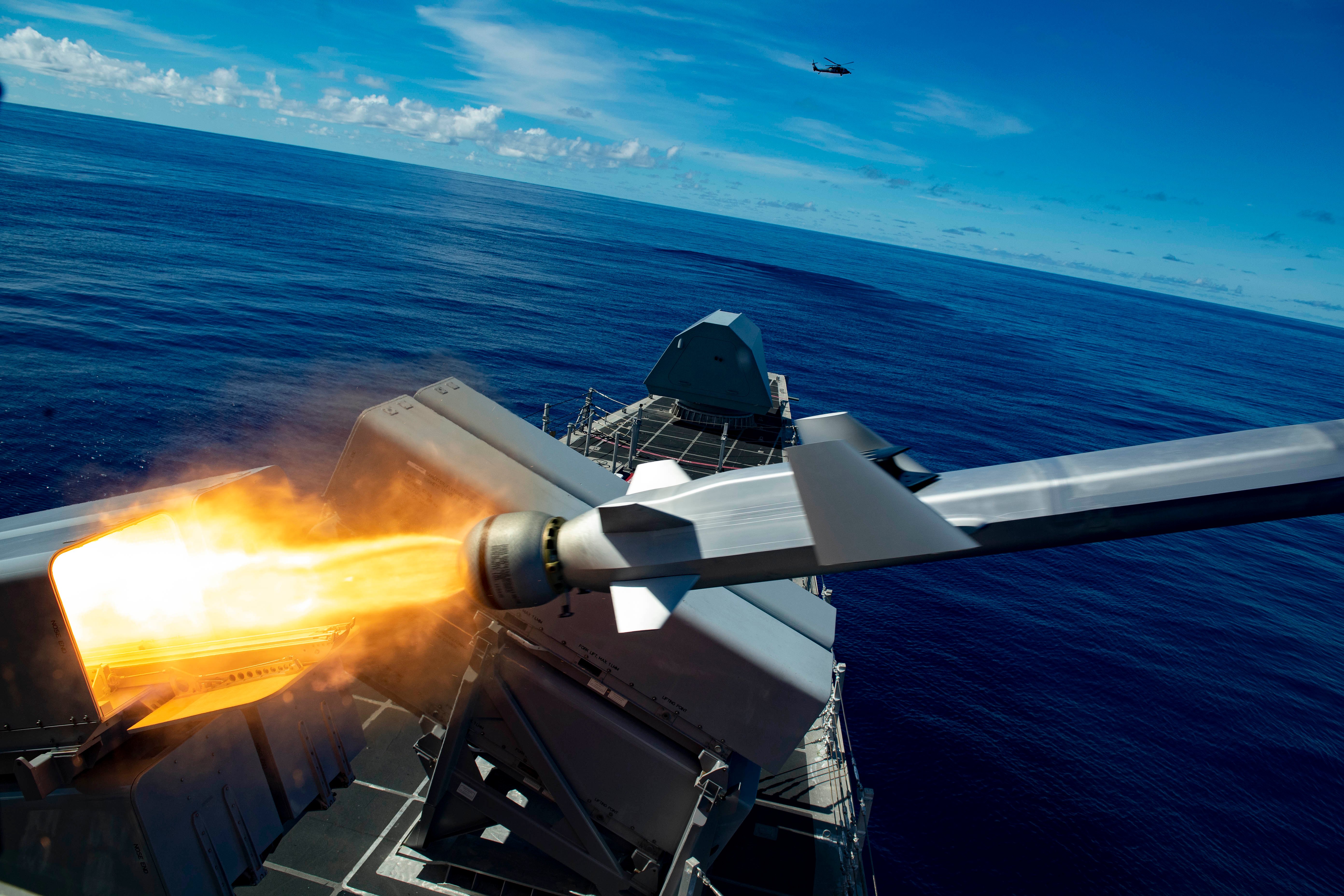
In the next couple of years the Navy hopes to have six Independence-class Littoral Combat Ships operating in the Western Pacific at a given time, the service’s top surface warfare officer said this week.
“In the Indy class, we continue to deploy them to the Western Pacific – trying to keep that 3.0 presence out there and build it to probably around 6 here in a few years,” Vice Adm. Roy Kitchener, the commander of Naval Surface Forces, told reporters in a Thursday media call.
Noting that all of the LCS that head to the Western Pacific are outfitted with the Naval Strike Missile, Kitchener said the service has used the Independence-class ships to demonstrate presence in the region.
“As far as operations, they’ve been working with our partners. We’ve operated them in an Australian exercise, where we teamed them up with some expeditionary [mine counter-measures] capability. We’ve used them for presence operations in the South China Sea and the East China Sea,” he said.
Despite the Navy’s push to decommission the LCS, Kitchener said he’s planning as if he will operate the class in the coming years. While the Navy has already decommissioned USS Independence (LCS-2), the lead ship of the Indy class, and plans to decommission USS Coronado (LCS-4), the service has focused its efforts on trying to retire the troubled Freedom-class ships, which are based on the East Coast.
“I continue to work to man, train and equip everything that we have on the books and I’ll continue to do that. So as I looked at decom strategies, the only issue I have with those as I try to influence is that I can’t just be pushing decommissionings … year by year because of the way the money flows. It makes it very difficult for me to generate readiness. I suspect we will have LCS ships well into the future and that’s how I’m preparing them,” Kitchener said.
While the Independence-class ships, based at Naval Station San Diego, have been deploying to the Indo-Pacific, the Navy in recent years has sent the Freedom-class LCS to U.S. Southern Command for counter-drug operations. The service recently deployed USS Sioux City (LCS-11) to the Middle East in a first for the class. Kitchener pointed to that deployment and said the Navy has taken lessons from operating the LCS in both U.S. 7th Fleet and U.S. 4th Fleet to determine the best maintenance strategies for the ships.
“Again, we teamed them up with some expeditionary MCM capability because that’s something we’re very interested in and had some really good success. They’ve also trained with partners, we’ve executed some maintenance, taken the lessons we’ve learned from 4th Fleet and also out in 7th Fleet and tied that all together,” he said of Sioux City.
Despite the Navy’s plans to decommission many of the Freedom hulls, Kitchener said he plans to deploy them to U.S. 5th Fleet and U.S. 6th Fleet.

“Again, still some things to look at and to work on as far as expeditionary maintenance, but so far leveraging those lessons from 7th and 4th Fleet seem to have paid off pretty well. We’re looking at continuing and to formalize a deployment strategy of Freedom-class ships to 5th and 6th Fleet as we sundown [patrol craft] out there,” he said.
The Navy has made progress on fixing the reliability issues on the Independence-class ships based in San Diego with the help of its Task Force LCS effort, Kitchener said.
“We’ve had a lot of success with reliability fixes and maintaining those ships on station, operationally longer. We still have some challenges as far as some of them systems and part of that is an effort of making sure we have the right parts at the point of need. There’s some scrutiny in the good work of Task Force LCS,” he said.
The SWO Boss pointed to USS Charleston (LCS-18), which has been operating int he Indo-Pacific this year, as an example of that progress.
“We really dove in with some analytics on understanding what parts we really needed out there. And we just had some recent success with coolers and things like that that were available for Charleston to keep them running,” he said. “I’ve been pretty happy with that, but there’s a lot more work to do, particularly if we want to build the force out there. We’ve gotten pretty adept at three, but I wouldn’t say that we’ve mastered it yet. So there’s some more work to do.”
The Naval Sea Systems Command LCS Strike strike team, led by Program Executive Office for Unmanned and Small Combatants Rear Adm. Casey Moton, helped the service make fixes to USS Oakland (LCS-24) ahead of its deployment.
“The work that the strike team did – the NAVSEA engineers – on reliability fixes, we pushed Oakland out, who’s our latest deployer, recently with about 20 to 25 of those fixes. Most significantly we replaced all the water jet cylinders before they left because we kind of figured out with the data we have how long they last, you know, what their life cycle is,” Kitchener said.
The Navy also replaced “some other cables and smart packs and pressure switches for those water jets,” on Oakland, Kitchener added. The service will compare Oakland‘s deployment to that of USS Tulsa (LCS-16), which just returned.

“And so that’s going to be really good as we measure how much more operational time we get with those fixes, compared to a ship like Tulsa who just returned who had maybe zero to, none to maybe five of those fixes. So looking forward to seeing the data that we get back on that one,” he said.
While the Navy has sent the Freedom-class ships to U.S. 4th Fleet for counter-drug operations over the last few years, Kitchener said the service has only recently figured out how to perform maintenance on the ships during deployments.
“[I]n 4th Fleet we continue to have pretty good success interdicting drug traffickers – the ship’s very well-suited for those kind of missions – and then working with our partners down there. We’ve also been able to start moving our maintenance around,” he told reporters. “At first down there we were a little bit limited and we tried some things to move them to different places and we’ve now been pretty good at developing some remote sites where we bring the ships in and fly gear in and bring people in and repair from there.”
In recent years the Navy has tried to shift more LCS maintenance responsibilities to sailors instead of relying on contractors, which was the original class maintenance model.
“As we transition to more of the sailor-focused maintenance, we spent a lot of time on getting our sailors some specialized training, buying some of the – getting the rights to some of the gear – we continue to do that,” Kitchener said.
He pointed to the crane at the back of the LCS that is used to deploy the Unmanned Influence Sweep System (UISS) and the rigid hull inflatable boats (RHIBs) as an example of where the Navy had to train its sailors as part of the maintenance model shift.

“Traditionally that’s been very problematic for us. There are some mechanical issues with it and there are also some training issues with it and some depth of knowledge issues, quite frankly,” Kitchener said.
“We called it the space shot – or the moon shot – where we really focused a big effort on how do we make sure this thing stays up all the time and how do we overcome this challenge and we’ve learned an awful lot there, got our sailors trained.”
While the Navy has made headway on LCS reliability and maintenance, Kitchener said the service needs to make more progress to ensure the ships are operating at full capacity.
“I still get concerned over some of the system readiness. I think we’ve improved our ability to stay underway, though sometimes I think from a system perspective we have more work to do in making sure that not only are they underway, but they’re 100 percent fully redundant on some of their combat readiness,” he said.





